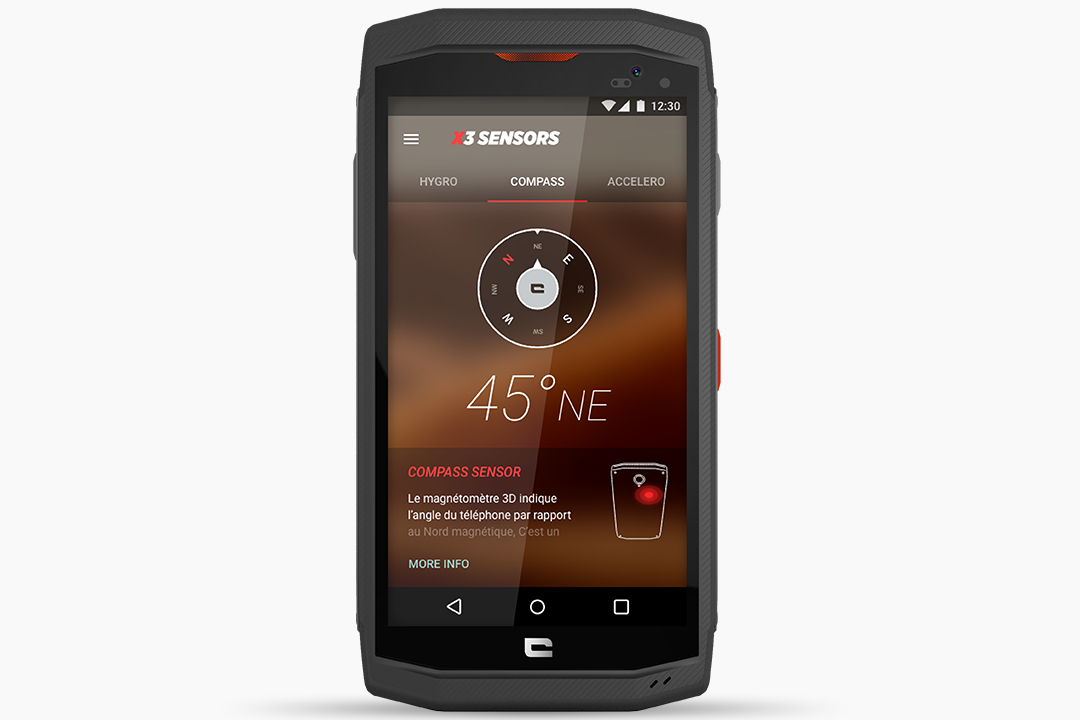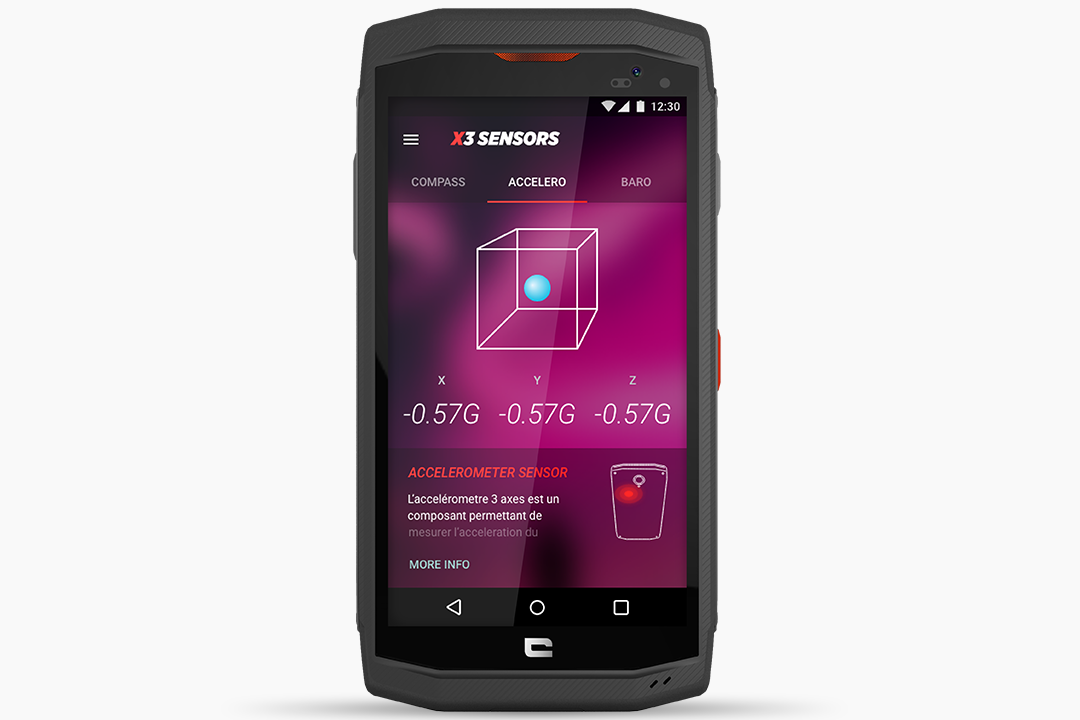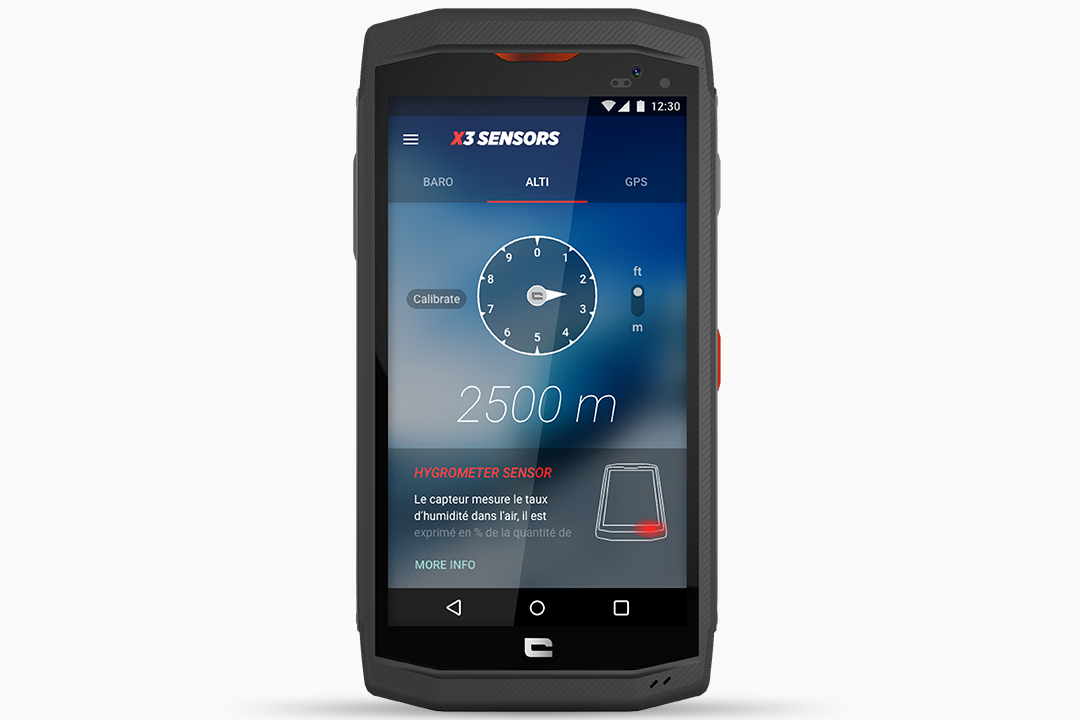To access all the data collected by the phone, CROSSCALL has developed the X3 SENSORS app, embedded natively on all TREKKER-X3 models. As well as providing you with data, these sensors allow you to use various apps, to be covered in a future article. Before that, here’s a presentation of the various sensors. Follow the guide!
The THERMOMETER
The TREKKER-X3‘s built-in thermometer is a high precision component.
Examples of use: whether you are inside or outside the TREKKER-X3 will provide you with the ambient temperature so you can make the right choices: having the right equipment, modifying the things to pack in your rucksack etc.
Tips for use: the temperature displayed may be influenced by that of the phone itself (if it is in a pocket or close to the body) but also by the charging circuit or processor activity. For an accurate measurement, you need to allow time for the Smartphone to take the temperature of the external environment (about 10 minutes).

The HYGROMETER

The hygrometry sensor measures the humidity in the air which is expressed as a water vapour saturation quantity %.
Examples of use: It will enable you to be sure of having the appropriate equipment for your outdoor sessions, for example.
Tips for use: when the sensor has been subjected to saturated damp air, or been in contact with water, it will need to dry out for a few minutes so that the measurements are reliable again. This drying process can be accelerated with a stream of hot dry air. The sensor will provide constantly-changing, real-time data.
THE MAGNETOMETER and 3 AXIS ACCELEROMETER
Everyone knows the value of a compass. However, the magnetometer and 3D accelerometer can measure the movement, position and acceleration of the smartphone within an area, in relation to magnetic north (different from the geographic north). This data can only be exploited via an app (pedometer, joystick, tracking lengths in a pool, etc.). Note that for the accelerometer, this kind of measurement is generally only reliable for short or time-limited movements.
Tips for use: it will sometimes be necessary to calibrate the electronic compass by moving your phone in a certain way.
THE BAROMETER

The smartphone can measure the atmospheric pressure. For your outdoor excursions, on a construction site or in everyday life, it can work out the local weather conditions or measure the risk of a potential thunderstorm, for example, provided you are able to decode the data.
Tips for use: remember that meteorology is complex and it is impossible to make accurate predictions even with lots of sensors. These can only help to put together a more comprehensive mathematical model.
THE ALTIMETER
The smartphone can measure altitude using atmospheric pressure. The advantage it has over a GPS is that it can discern more precise altitude variations (to the order of one meter). This accuracy is achieved using smoothing algorithms based on a knowledge of the sport (hiking, mountain biking etc.).
Examples of use: finding out the remaining altitude and your ascending speed on a hike, identifying routes for professional mountain guides, measuring the height of a tower on a building site, measuring your level relative to the sea etc.
Tips for use: the altimeter needs to be regularly calibrated using a physical reference: a display panel or topographic map. It is also possible to force calibration using GPS (when GPS signal reception conditions are optimal and there is very good accuracy). It is not advisable to use this as a variometer in free-flight sports.
THE GPS

The GPS on the TREKKER-X3 is an advanced GPS. It benefits from the “assisted GPS” system that allows faster position calculation, even outside network coverage (the phone contains a table for anticipating GPS satellite positions based on the previous position of the user, the date and the time). It also optimises accuracy by tracking satellites in the Russian system GLONASS for perfect localisation across the globe.
Tips for use: the GPS only detects satellite signals when OUTSIDE. A test carried out inside will therefore be inconclusive.
Natural factors can sometimes cause GPS accuracy to deteriorate: rocky cliffs or canyons, significant foliage or cloud cover. Accuracy can also be reduced if all the detected satellites are on the same side of the user.
THE PROXIMITY SENSOR
The proximity sensor measures the light intensity at a given point. It detects physical barriers in front of the surface of the phone and carries out an action based on their presence and proximity. Its main use is to turn off the screen of your TREKKER-X3 during phone calls.

THE LIGHT SENSOR

The light sensor helps you to optimise your screen brightness based on the ambient light to save your battery or to optimise readability.
Tips for use: automatically adjust screen brightness by selecting this function in your phone settings to benefit from automatic adaptation.
BLUETOOTH
The embedded Bluetooth on the phone is a Bluetooth 4.1. It has a low power mode. The effective range is very dependent on disturbances surrounding the phone (metal and water masses). In the open air this can extend up to several tens of meters. The signal strength (RSSI) is therefore able to “locate” a connected accessory (keys, suitcase, wallet, etc.), providing you are using an appropriate app.

NETWORKS
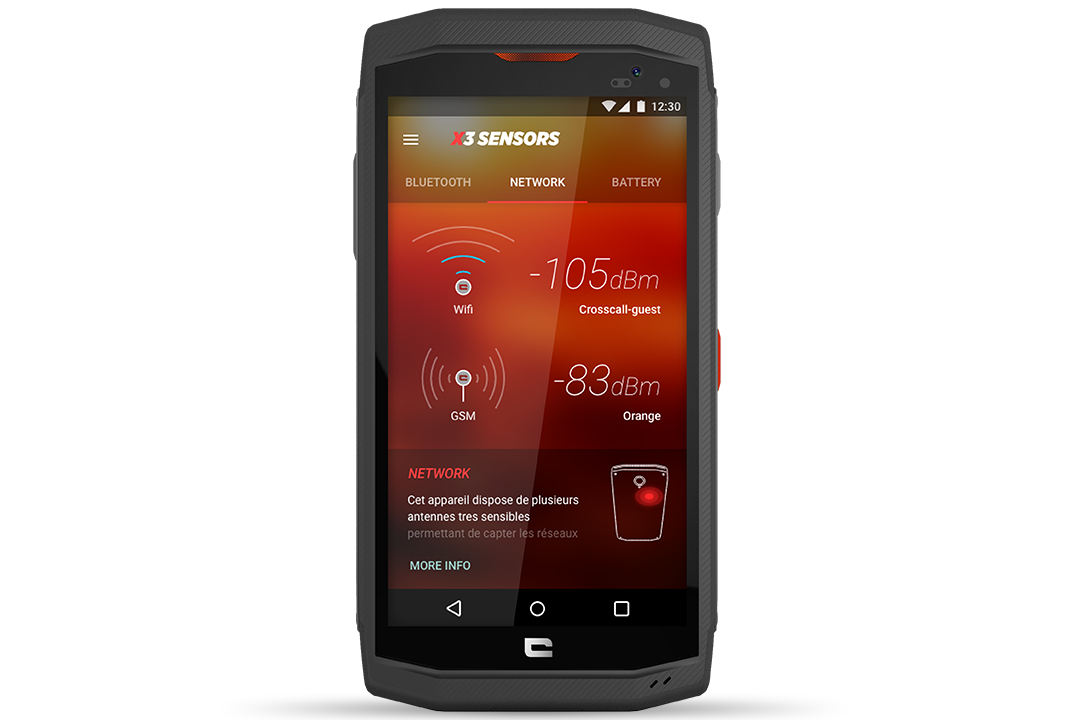
The network sensor gives a visible indication of the strength of the signal transmitted by Bluetooth, WLAN and 2G, 3G, 4G via highly sensitive antenna for optimal detection of the communication networks. The sensor adapts to local conditions to provide seamless communication.
Tips for use: the further away the transmitting antenna is located, the more significant external interference will become. The greater the signal power used by the device to establish good communication, the greater the energy consumption will be, therefore reducing battery life.
THE BATTERY SENSOR
Il permet de connaître la consommation en batterie du téléphone toutes les 30 secondes. This tells you the consumption of the phone battery every 30 seconds.
Tips for use: we advise you, in outdoor use, to disconnect any connections you don’t need (WiFi, for example), or use a power saving app such as Battery Doctor.

GEAR USED
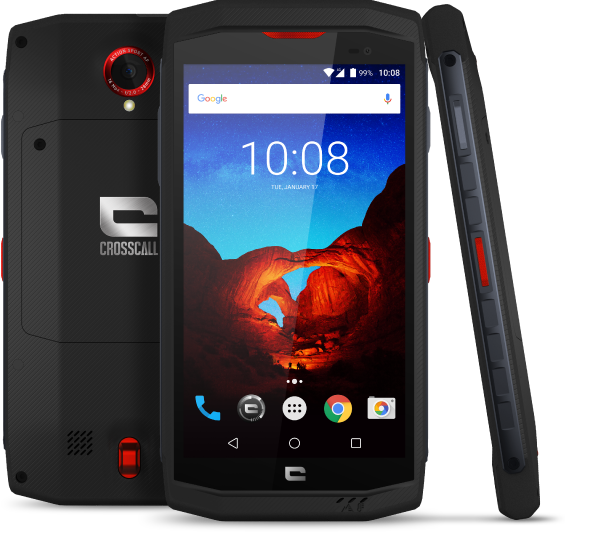
 Choose your country and language
Choose your country and language
